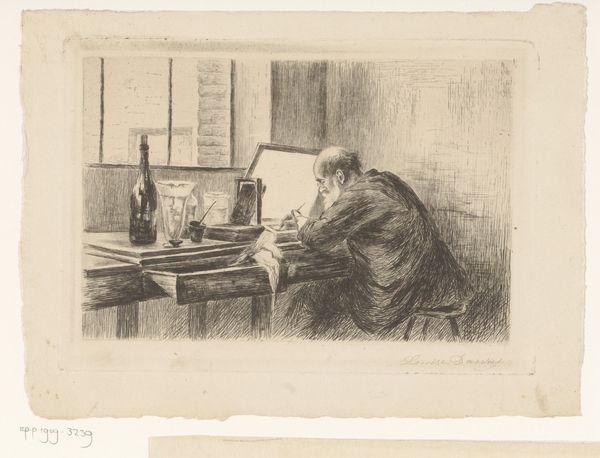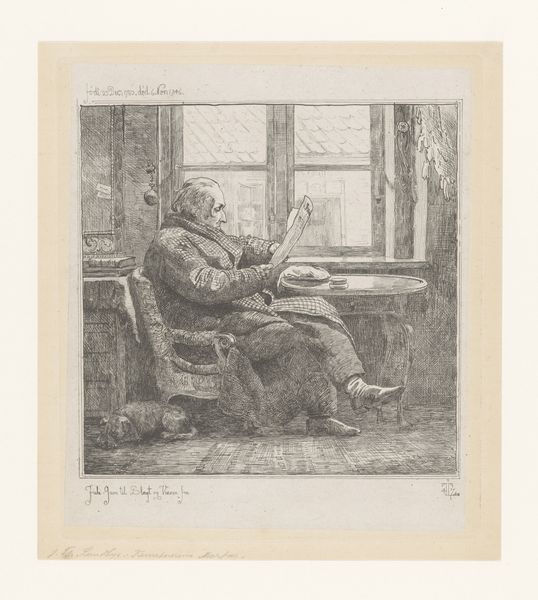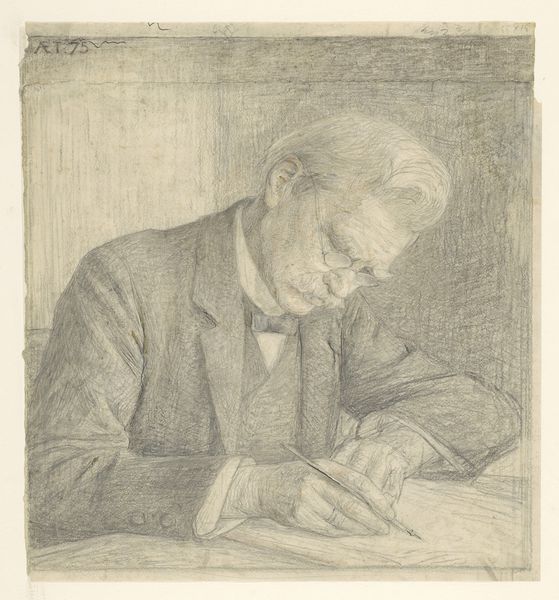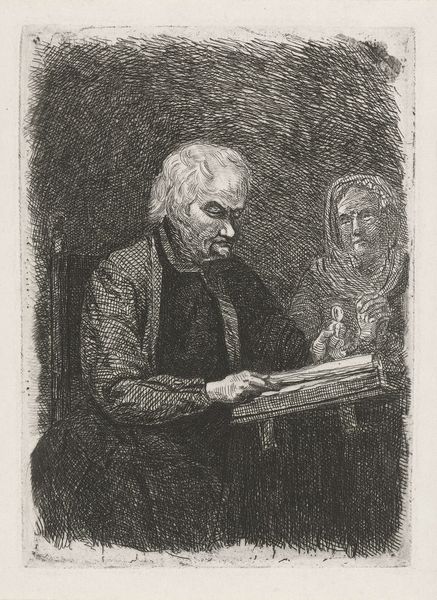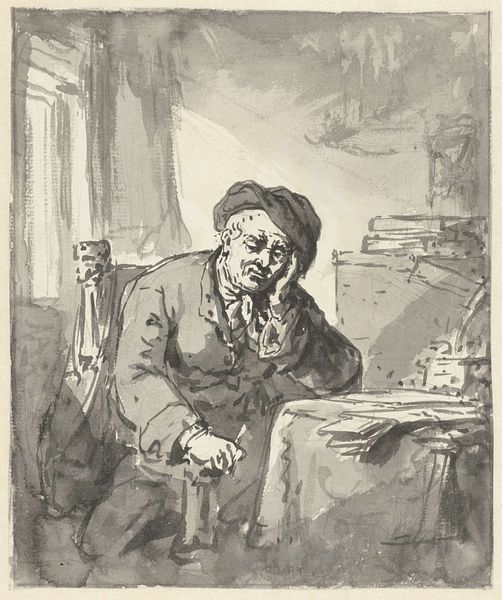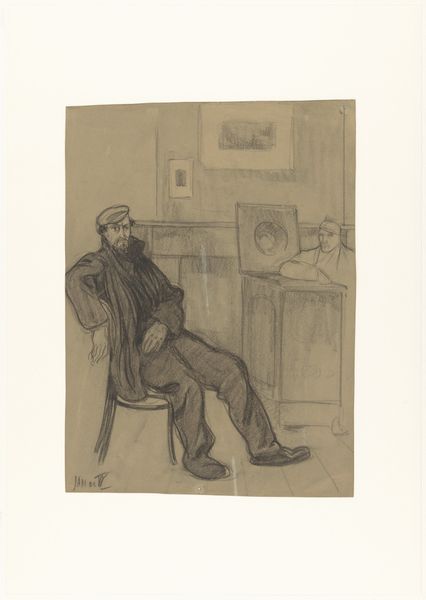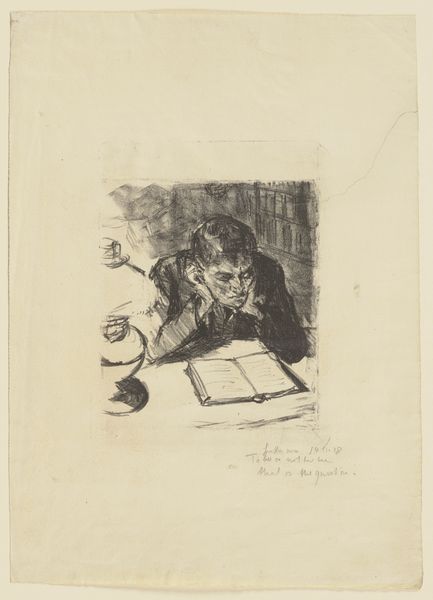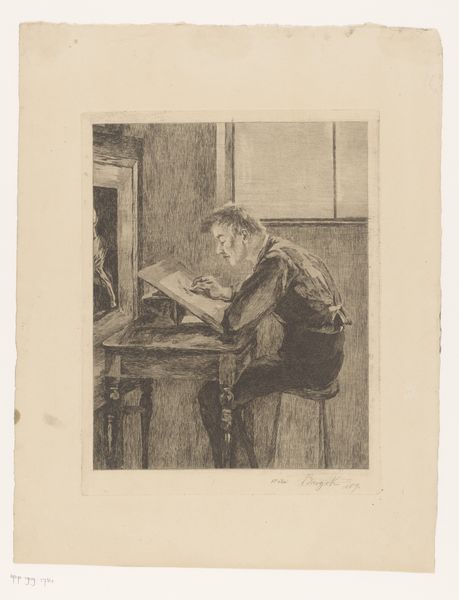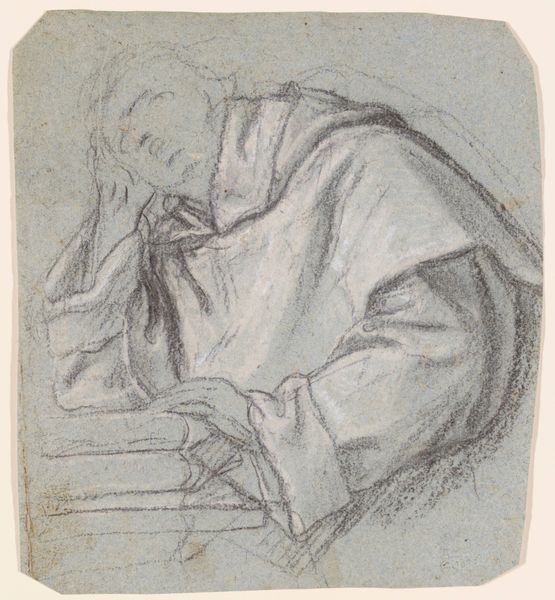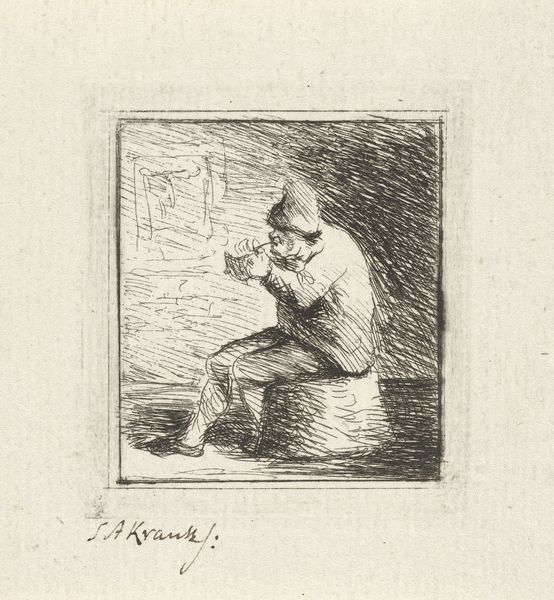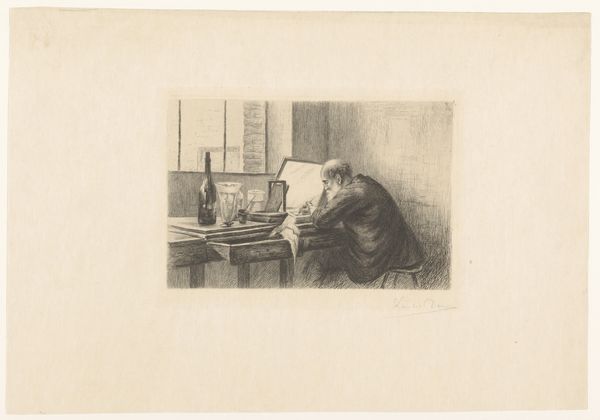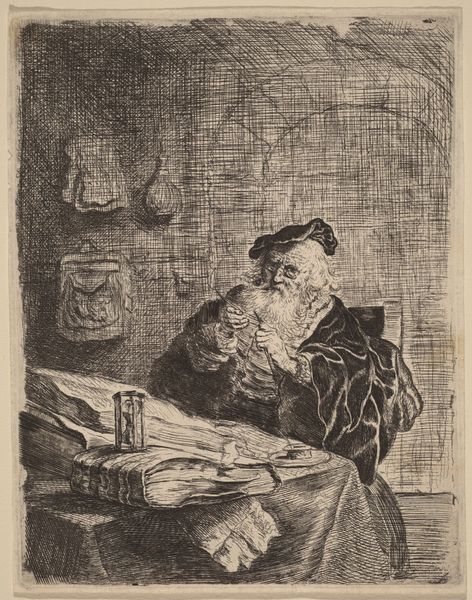
drawing, graphite
#
portrait
#
drawing
#
self-portrait
#
caricature
#
pencil drawing
#
graphite
#
realism
Dimensions: height 283 mm, width 270 mm
Copyright: Rijks Museum: Open Domain
Editor: Here we have Simon Moulijn's "Self-Portrait with Lithographic Stone" from 1929, rendered in graphite. It strikes me as a very internal portrait, the artist seems lost in thought. What do you see in this piece, particularly regarding its context? Curator: It's a compelling work, isn't it? Moulijn portrays himself in the midst of creation, but with an air of weariness or even struggle. This was 1929, right before the Great Depression fully impacted Europe. Could this artistic introspection reflect the broader anxieties of the era, a premonition of societal and economic upheaval? How does his positioning, head in hand, convey these themes? Editor: That's interesting. I hadn't considered the economic climate. The lithographic stone is so prominent—is that meant to signify the artist's labor and its potential instability during the Depression? Curator: Precisely! Lithography was a significant medium for artistic and commercial printing. However, the rise of new technologies always casts a shadow on established forms. What does it mean to portray oneself working with a method that might become obsolete? There’s a tension there, connecting to the era's anxieties about labor, value, and the future of work itself. Does it bring to mind any contemporary debates? Editor: Absolutely! It reminds me of discussions around AI and the gig economy today—the anxiety about artistic labour, authenticity and fair compensation. Thanks, this gave me a totally different appreciation of Moulijn's work. Curator: Indeed. Seeing the piece through this lens highlights its continued relevance. It's a portrait not just of an artist, but of a society grappling with change.
Comments
No comments
Be the first to comment and join the conversation on the ultimate creative platform.
